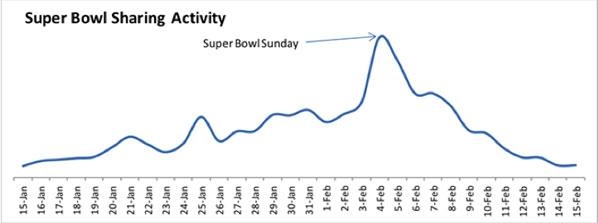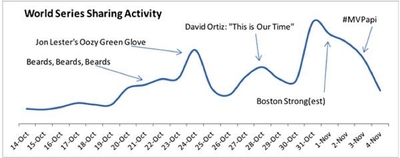Social media has fundamentally changed digital advertising, and heading into
2014, real-time marketing is going to be a trend to watch. As we saw with Oreos and the Super Bowl in 2013, brands want to be part of the social conversation. When they do it authentically (and
immediately), it can have a lasting impact and create buzz. For the most part, though, Oreo is the exception to the rule. Not every media manager can keep their trigger finger flexed for
split-second deployment, nor should they be expected to.
Major events -- athletic and otherwise -- are catalysts for cross-channel, cross-device conversations
that are as much a part of the cultural buzz as the event itself. The real opportunity lies in the ability to create and execute campaigns in real-time that reach the right audience at scale across
all social channels.
But, as all marketers will tell you, this is easier said than done. There a lot of moving parts and proper planning needs to be in place well ahead of time.
When it comes to effective real-time marketing, here are five steps brands can to take in 2014 to succeed:
1) Start early
Major events generate
weeks of social build-up and cool-down. Take a look at last year’s Super Bowl conversation, for example, which started two weeks before game day.

Brands should
closely monitor sharing activity weeks ahead of an event, playing on the various peaks and troughs generated by the stories that emerge over time.
2) Play to the strengths
of each event
For most brands, the Olympics vs. Super Bowl debate boils down to national vs. domestic reach. However, both opportunities present unique marketing
opportunities. The Super Bowl is a game of reach and scale, but the structure and timeframe of Olympic events are highly conducive to real-time marketing. With events happening over the course of
several weeks, and each event having its share of rising stars and surprises, brands have a wealth of stories to tune into and reach unexpected audiences at the right time, with the right message.
You should also find an event that is the right size. For smaller brands, making a splash at the Oscars is less likely -- choose events that have decent exposure but are also small
enough (and reach your audience) to make an impact.
3) Look beyond the obvious
People don’t always share what we expect them to. The best
conversations are spontaneous. Look at another sports example -- social engagement surrounding the World Series was full of memes and emotional call-backs.

Sure, scores and
highlights garnered plenty of consumption, but when it comes to sharing, we’re more amenable to content that resonates through laughter and emotional connection. For the most part, these
conversations are unpredictable and happen organically. Marketers need to listen and be prepared to respond to the topics and trends that aren’t necessarily the most obvious.
4) Collaborate with others in your organization
Working together with PR, advertising, marketing and creative teams is extremely important if you want to
execute a real-time campaign effectively. Set up processes and deliverables for all of the teams involved so everyone knows what to do when a trend emerges. You’ll be more organized and
more likely to reach your desired engagement levels (and share successes and results across the board).
5) Get to know your audience
Real-time marketing is all about being a part of a timely conversation. And when you’re having a conversation, you have to know who you’re talking to. You’re going to
have a different approach when you’re talking to moms who are watching the Grammy’s as opposed to millennials watching the Grammy’s. Think about which sub-group you want to
engage with and what parts of the event are most interesting to them.
At the end of the day, real-time activation shouldn’t be limited to spontaneous reactive marketing.
Yes, real-time conversations are driven by random highlights, discourse, humor, and the countless other forms of expression, but the brands that will win in 2014 are those that learn to closely
listen to these conversations, adapt their messaging strategies accordingly, and stay on-brand with current goals and objectives in mind.